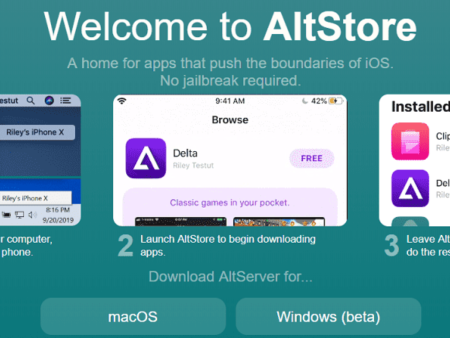Mastering Mobile App Analytics: The Key to Driving Growth, Engagement
-
19/02/2023
-
902
-
1
- 1. Understanding the Importance of Mobile App Analytics
- 2. Choosing the Right Mobile App Analytics Tools
- 3. Analyzing User Behavior and Engagement
- 4. Setting Goals and KPIs for Your Mobile App
- 5. Improving App Performance and User Experience
- 6. Leveraging Mobile App Analytics for Growth and Retention
- Conclusion
Mobile app analytics is collecting and analyzing data related to the performance of a mobile application. This data can provide valuable insights into how users interact with an app, how well the app performs, and what areas may need improvement. Mobile app analytics tools allow developers to track various metrics, such as user engagement, retention, conversion rates, in-app purchases, and more. By analyzing this data, developers can make data-driven decisions to optimize their app for growth, engagement, and retention.
Mobile app analytics can help developers understand how users discover their app, what features are most popular, and where users may be experiencing issues. By identifying these areas for improvement, developers can optimize the user experience and drive engagement and retention. Overall, mobile app analytics is a crucial part of mobile app development. And can help developers make data-driven decisions to optimize their apps for success. By collecting and analyzing user behavior and app performance data, developers can create a better user experience, improve app performance, and drive growth and retention.
Related posts
The Power of Influencer Marketing For Mobile Apps 2023
Best Guide to Localizing Apps for App Store Success 2023
1. Understanding the Importance of Mobile App Analytics
Mobile app analytics is crucial for understanding how users interact with your app and how you can improve its performance and user experience. Here are some smaller ideas to help you understand the importance of mobile app analytics:
 Mastering Mobile App Analytics, Source: Asoservice.com
Mastering Mobile App Analytics, Source: Asoservice.com
Mobile app analytics provide insights into user behavior: By tracking user behavior within your app, you can gain a better understanding of how users are using your app, what features are most popular, and where users are dropping off. This information can help you make data-driven decisions about improving your app and optimizing the user experience.
Mobile app analytics help you measure app success:
Mobile app analytics provide data on key performance indicators (KPIs) such as user engagement, retention, and conversion rates. These metrics can help you measure the success of your app and identify areas for improvement.
Mobile app analytics are different from web analytics: While web analytics focus on website traffic and conversions, mobile app analytics provide insights into user behavior within a native app. Mobile app analytics can also track app-specific events and user actions, such as in-app purchases and push notifications.
Mobile app analytics are essential for app optimization: By using mobile app analytics to identify performance issues and user experience problems. You should optimize your app for better performance, engagement, and retention. Without mobile app analytics, it cannot be easy to know where to focus your efforts for the most significant impact. App developers can buy Top app keyword ranking 1, 3, and 5 on App Store and Google Play to get more app users.
2. Choosing the Right Mobile App Analytics Tools
Choosing the right mobile app analytics tools is critical for getting accurate. And actionable insights into your app's performance and user behavior. Here are some smaller ideas to help you choose the right mobile app analytics tools:
Identify your needs: Before choosing a mobile app analytics tool, identify what you need. What metrics do you want to track? What features do you need? What are your data analysis needs? Identifying your requirements will help you evaluate and compare different tools.
Top 5 Mobile App Analytics Tools, Source: Youtube
Consider the features: Mobile app analytics tools offer a range of features. Including event tracking, user segmentation, and A/B testing. Consider which features are most important for your app and ensure that your chosen tool offers them.
Look at data collection and analysis: Make sure that the mobile app analytics tool you choose collects data in a way that is accurate, reliable, and compliant with relevant privacy regulations. Also, consider the tool's data analysis capabilities, including the types of reports and visualizations it provides and how it integrates with other tools.
Evaluate the ease of Use:
Look for an easy-to-use mobile app analytics tool with an intuitive interface. An easy-to-navigate and understand tool will save you time and frustration when analyzing your app's data.
Consider pricing: Mobile app analytics tools vary in price and often charge based on the volume of data you collect. Consider the cost of the tool and whether it is within your budget. Also, make sure to factor in any hidden costs, such as data storage or support fees.
Read reviews and get recommendations: Before making a decision, read reviews of the mobile app analytics tools you are considering and get recommendations from others in the industry. This will help you understand what it's like to use the tool and whether it meets the needs of others in similar roles or industries. App developers can buy Android keyword installs for their app to improve Android keyword ranking faster.
3. Analyzing User Behavior and Engagement
Analyzing user behavior and engagement is a crucial part of mobile app analytics. Here are some smaller ideas to help you effectively analyze user behavior and engagement:
Track user activity: Mobile app analytics tools allow you to track user activity, including the number of app downloads, app launches, screens visited, and user actions taken within the app. This data helps you understand how users engage with your app and which features are most popular.
Segment your users: Segmenting your users allows you to group them based on specific characteristics. Such as demographics, location, or behavior. This allows you to understand better how different types of users interact with your app and tailor your strategies accordingly.
Analyze user retention: User retention is a crucial indicator of app success. And mobile app analytics tools allow you to track retention over time. By understanding the factors contributing to user retention or churn. You can improve user engagement and increase retention.
Evaluate conversion rates:
Conversion rates measure how many users complete a desired action within the app, such as making a purchase or registering for an account. Analyzing conversion rates helps you identify areas for improvement and optimize your app to increase conversions.
Monitor user feedback: User feedback can provide valuable insights into how users engage with your app and what they like or dislike. Mobile app analytics tools allow you to monitor user feedback and reviews from app stores and social media platforms. Helping you understand how users perceive your app and identify areas for improvement.
Use A/B testing: A/B testing allows you to test different versions of your app with different groups of users and measure their impact on user behavior and engagement. By testing different variations of your app. You can identify which features or design elements are most effective and make data-driven decisions to optimize your app for better engagement.
By effectively analyzing user behavior and engagement using mobile app analytics. You can gain valuable insights into how users interact with your app and identify areas for improvement to increase engagement and retention. You can buy Android app reviews from real users at the cheapest price.
4. Setting Goals and KPIs for Your Mobile App
Setting goals and key performance indicators (KPIs) for your mobile app is essential in optimizing your app's performance and driving growth. Here are some smaller ideas to help you set practical goals and KPIs for your mobile app:
Define your objectives: Before setting goals and KPIs, it's essential to define your overall objectives for your mobile app. What do you want to achieve? Do you want to increase user engagement, boost retention, or drive revenue? A clear understanding of your objectives will help you set specific and relevant goals.
Set SMART goals: Your goals should be specific, measurable, achievable, relevant, and time-bound (SMART). Setting SMART goals helps you create a clear roadmap to achieving your objectives. For example, if your objective is to increase revenue. A SMART goal might be to increase in-app purchases by 20% within the next six months.
Intro to metrics - A KPI guide for Google Play Apps and Games, Source: Youtube
Identify key performance indicators (KPIs): KPIs allow you to measure progress toward your goals. To identify relevant KPIs, consider your objectives and your SMART goals. For example, if your goal wants to increase user engagement. Relevant KPIs include daily active users, session length, and retention rate.
Benchmark your performance:
Before setting goals and KPIs, it's important to benchmark your app's performance against industry standards and your historical data. This will give you a baseline to measure progress. And help you set realistic goals.
Monitor your progress: Once you've set your goals and KPIs. It's essential to monitor your progress regularly. Mobile app analytics tools can help you track your KPIs and identify areas for improvement. You can make data-driven decisions to optimize your app for better performance and user experience by monitoring your progress.
Adjust goals and KPIs as needed: Finally, it's essential to be flexible and adjust your goals and KPIs as needed. If you find that you are not meeting your goals or if your goals are no longer relevant, it's important to adjust them to better align with your objectives and priorities.
By setting practical goals and KPIs for your mobile app, you can clearly understand your app's performance. And make data-driven decisions to optimize your app for growth and success.
5. Improving App Performance and User Experience
Improving app performance and user experience is a crucial goal for any mobile app developer. And mobile app analytics can play a crucial role in achieving this. Here are some smaller ideas to help you improve app performance and user experience using mobile app analytics:
Monitor app performance: Mobile app analytics tools can help you monitor app performance, including load times, crashes, and errors. By tracking these metrics. You should identify areas where your app may be experiencing issues and take steps to optimize performance.
Identify user pain points: Mobile app analytics can also help you identify user pain points, such as frequent crashes or difficult-to-use features. You should make data-driven decisions to improve the user experience by understanding where users are struggling.
Improving app performance with benchmarking, Source: Youtube
Collect user feedback:
Collecting user feedback is essential to improving the user experience. Mobile app analytics tools can help you collect feedback from users, such as through in-app surveys or reviews in app stores. By listening to user feedback. You should gain valuable insights into how users perceive your app and identify areas for improvement.
Use heatmaps and session replays: Heatmaps and session replays allow you to see how users interact with your app in real time. By analyzing user behavior. You can identify areas where users may be getting stuck or frustrated and take steps to optimize the user experience.
Optimize app design: App design plays a crucial role in the user experience. And mobile app analytics can help you optimize your app design. By tracking user behavior and engagement. You can identify which design elements are most effective and make data-driven decisions to optimize your app for better engagement and retention.
Test app changes: A/B testing allows you to test different versions of your app with different groups of users and measure their impact on user behavior and engagement. By testing different variations of your app. You can identify which features or design elements are most effective and make data-driven decisions to optimize your app for better engagement.
Using mobile app analytics to improve app performance and user experience. You can make data-driven decisions to optimize your app for growth and success. By monitoring app performance, and collecting user feedback. And optimizing app design, you can create a better user experience and drive engagement and retention.
6. Leveraging Mobile App Analytics for Growth and Retention
Leveraging mobile app analytics is a powerful way to drive growth and retention for your app. Here are some smaller ideas to help you use mobile app analytics to achieve these goals:
Identify high-value users: Mobile app analytics can help you identify high-value users, such as those who make frequent purchases or engage with your app regularly. By understanding your high-value users. You can create targeted campaigns to engage and retain these users.
Optimize user acquisition: Mobile app analytics can also help you optimize user acquisition strategies. By analyzing user acquisition metrics, such as cost per install (CPI) and user lifetime value (LTV). You can identify the most effective acquisition channels and allocate your resources accordingly.
Mobile Apps: User Growth, Engagement, & Retention. Source: Youtube
Use pushes notifications: Push notifications are a powerful way to engage and retain users. And mobile app analytics can help you use them effectively. By tracking push notification engagement rates. You can identify which types of notifications are most effective and create targeted campaigns to engage users.
Personalize the user experience:
Personalizing the user experience is vital in driving engagement and retention, and mobile app analytics can help you do this effectively. You can create personalized recommendations and experiences tailored to each user's preferences by tracking user behavior and engagement.
Analyze user churn: Mobile app analytics can help you understand why users are churning from your app and take steps to address these issues. By tracking user churn metrics, such as retention rate and churn rate. You can identify which features or elements of your app may be causing users to leave and take steps to optimize the user experience.
Continuously iterate and improve: Finally, it's essential to continuously iterate and improve your app based on the insights you gain from mobile app analytics. You can optimize your app for growth and retention over time by making data-driven decisions and testing new features and strategies.
By leveraging mobile app analytics for growth and retention. You can make data-driven decisions to optimize your app for success. By identifying high-value users, optimizing user acquisition, using push notifications, personalizing the user experience, analyzing user churn, and continuously iterating and improving. You can create a better user experience and drive engagement and retention for your app.
Conclusion
In conclusion, mobile app analytics is essential for mobile app developers and marketers. Mobile app analytics can help developers make data-driven decisions to optimize their app for growth, engagement, and retention by collecting and analyzing data related to user behavior and app performance. It provides a wealth of information that can help developers understand how users interact with their app, what features are most popular, and where users may be experiencing issues. With this data, developers can identify areas for improvement and optimize the user experience to drive engagement and retention. It can also help developers track user acquisition and retention metrics, such as cost per install (CPI) and retention rate, to identify which acquisition channels are most effective and optimize their user acquisition strategy. Overall, mobile app analytics is a powerful tool that can help developers make informed decisions to optimize their apps for success. By continuously collecting and analyzing user behavior and app performance data, developers can create a better user experience, improve app performance, and drive growth and retention.
Related posts
https://asoservice.com/macos-app-reviews-ratings
https://asoservice.com/top-app-keyword-ranking
Thanks so much for reading this article.




































Leave a Reply
Your e-mail address will not be published. Required fields are marked *